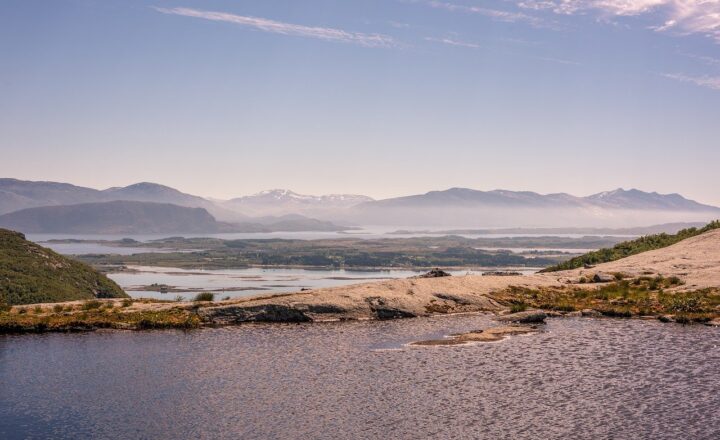The Most Ambitious Travelers Who Set Out to Explore the Most Remote Corners of Earth
November 17, 2024

Travel is often seen as a way to relax, unwind, and escape the everyday grind. But for some, it is about more than just leisure; it is an adventurous pursuit filled with discovery and challenge. In this article, we will dive deep into the stories of the most ambitious travelers who have relentlessly set out to explore the most remote and untouched corners of our planet. From uncharted isles to the depths of the wilderness, these explorers have taken travel to another level.
1. The Allure of the Unknown
The idea of traveling to unexplored territory is an exhilarating notion for many. Ambitious travelers are drawn to the mysteries that await them in remote locations, often motivated by the desire to experience cultures and landscapes that few have seen before. The thrill of venturing into the unknown can be profoundly rewarding. Here are some reasons why adventurous souls seek out the remote corners of the Earth:
- Cultural Immersion: Traveling to remote areas allows for authentic interactions with indigenous cultures. Experiencing local traditions, music, and cuisine enriches the travel experience beyond the typical tourist traps.
- Natural Wonders: Many ambitious travelers are motivated by their love of nature. Remote locations often boast stunning landscapes, unique wildlife, and natural phenomena only visible off the beaten path.
- Personal Growth: Stepping out of one’s comfort zone fosters growth. By facing adversity and navigating challenges in unfamiliar environments, travelers often return changed and inspired by their experiences.
Through the lens of ambition and exploration, we can appreciate how travel transcends mere enjoyment; it becomes a transformative journey into the heart of our world.
2. Iconic Ambitious Travelers
Many travelers have made their mark in the annals of exploration, going above and beyond to bring attention to the planet’s most secluded places. Here are a few iconic adventurous souls who exemplify this courageous spirit:
a. Thor Heyerdahl
Thor Heyerdahl was a Norwegian adventurer who famously sailed the Pacific Ocean on a balsa wood raft named Kon-Tiki in 1947. His journey spanned over 4,300 miles from South America to the Polynesian islands. Heyerdahl’s mission was to prove that ancient cultures could have made long sea voyages, and his epic quest has inspired generations of adventurers to challenge preconceived notions about the limitations of exploration.
b. Barbara Hillary
Barbara Hillary was the first African American woman to reach the North and South Poles. In her late sixties, she embarked on an ambitious expedition to the North Pole, proving that age is not a barrier to exploration. Her determination and passion for adventure broke stereotypes, paving the way for future generations of adventurers, especially women.
c. Mike Fay
Mike Fay is an American conservationist and explorer celebrated for his “MegaTransect” expedition—an ambitious project that consisted of traversing the entire length of the Congo rainforest. Over the course of 455 days, Fay documented and mapped the remote forest landscape, emphasizing the importance of protecting this biodiverse habitat. His exploration contributed significantly to conservation efforts and brought worldwide attention to the ecological significance of the Congo.
3. The Most Remote Corners of the Earth
While ambitious travelers chase their dreams in various locations worldwide, some remote areas stand out due to their inaccessibility and majestic beauty. Here are a few of the most remote corners of the Earth that have become the playgrounds for heroic explorers:
a. Tristan da Cunha
Located in the South Atlantic Ocean, Tristan da Cunha is considered the most remote inhabited archipelago in the world. With a population of only around 250, the challenges of reaching this island are considerable, as it can take over a week by boat from South Africa. Its breathtaking volcanic landscape and unique ecology make it a significant target for explorers seeking untouched beauty.
b. Bouvet Island
Bouvet Island, an uninhabited island located in the South Atlantic Ocean, is often called the most remote island on Earth. With its icy terrain and harsh weather conditions, reaching Bouvet poses significant challenges. The unyielding isolation and unique natural habitat attract researchers and adventurous wanderers alike, keen to experience its untouched wilderness.
c. The Amazon Rainforest
The Amazon Rainforest, bordering several South American countries, is frequently regarded as one of the most biodiverse regions on the planet. While some areas are popular among tourists, vast stretches remain unexplored due to dense foliage and challenging terrain. This unique environment pulls ambitious travelers who are fascinated by indigenous cultures, wildlife, and ecological conservation.
4. Preparing for Remote Exploration
Traveling to remote corners of the Earth isn’t just about passion; it requires careful planning and preparation. Here are essential considerations for anyone looking to embark on an adventurous trip into the unknown:
- Research Your Destination: Understanding the geography, climate, and culture of the area is critical. Knowledge about local customs can lead to more meaningful interactions with local communities and enhance the travel experience.
- Physical Preparation: Remote travels often demand physical endurance. Staying fit, building specific skills such as hiking or kayaking, and even survival training can substantially benefit the journey.
- Safety Equipment: Depending on the location and activities, the right gear can make or break an expedition. Whether it’s a reliable GPS device, first-aid supplies, or proper camping equipment, preparedness is key.
- Engage Local Guides: Local knowledge is invaluable when navigating untouched territories. Hiring experienced guides provides insights into hidden gems and ensures safety during the journey.
By taking these precautions seriously, adventurous travelers can minimize risks while maximizing their chances of an enriching experience.
5. The Future of Remote Exploration
As our world becomes more interconnected, the need for exploration remains as vibrant as ever. While technology has made significant strides in allowing us to virtually traverse the globe, some travelers still feel an irresistible pull to explore the physical realm. With this surge in interest for remote locations, there are several trends shaping the future of exploration:
- Eco-Conscious Travel: The growing awareness of environmental issues has led many travelers to engage in eco-friendly practices. Respecting local ecosystems and supporting sustainable projects ensures that these untouched areas remain pristine for future generations.
- Adventure Technology: Innovations such as drones and satellite imagery allow modern adventurers to explore previously inaccessible areas. These cutting-edge tools facilitate remote monitoring and research, expanding our understanding of the world’s wild places.
- Education and Conservation Programs: Increasingly, travelers are integrating educational components into their journeys, taking part in conservation efforts or research projects that benefit the locations they are exploring.
Ambitious explorers are not merely seeking adventure; they are becoming stewards of the Earth, combining their passions for travel and environmental sustainability.
Conclusion
The stories of the ambitious travelers who dare to explore remote corners of our planet serve as an inspiration for present and future adventurers alike. They remind us that the world is filled with mystery, beauty, and opportunities for personal growth. Whether wandering through isolated islands, dense jungles, or icy terrains, the pursuit of exploration captures the spirit of human ambition.
As we continue to set out into the unknown, let us embrace the adventure with curiosity and respect for the planet we inhabit. By doing so, we not only indulge in our wanderlust but also contribute to the preservation of the world’s most precious and remote corners.
Ultimately, the heart of travel lies in the journey of discovery—both of the Earth around us and of ourselves. Who knows what you might find when you venture into the uncharted territories of our magnificent world?






